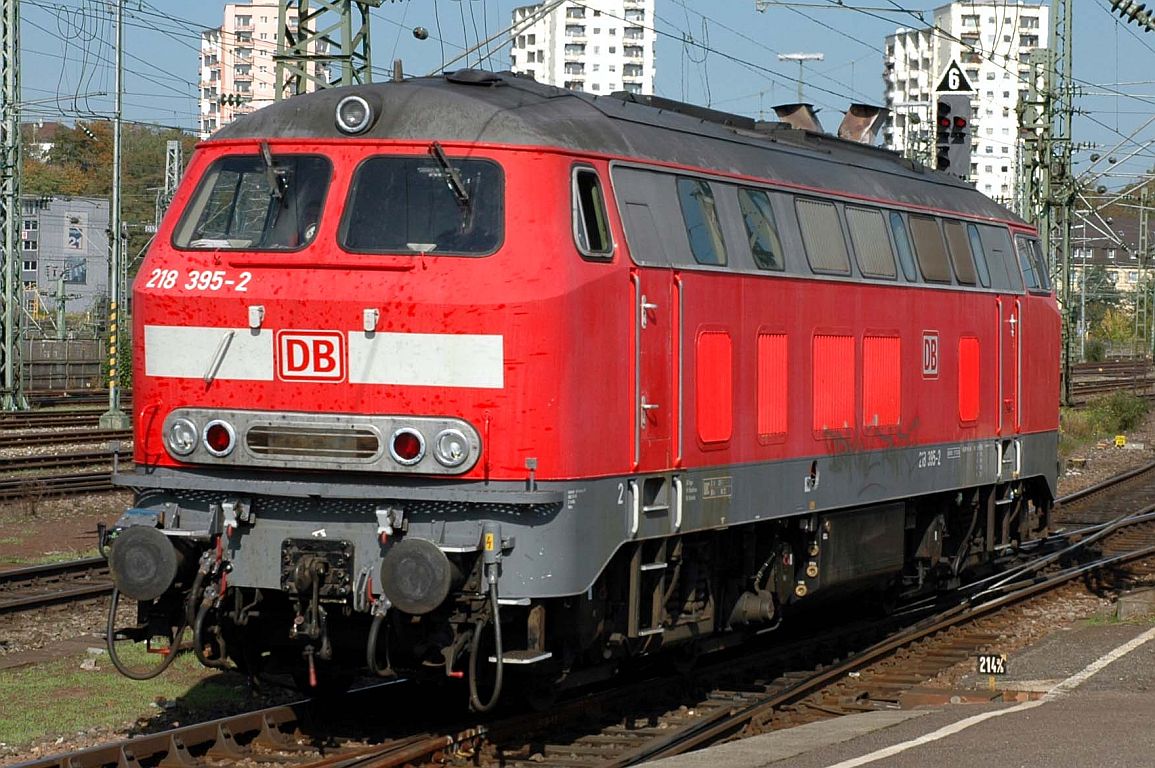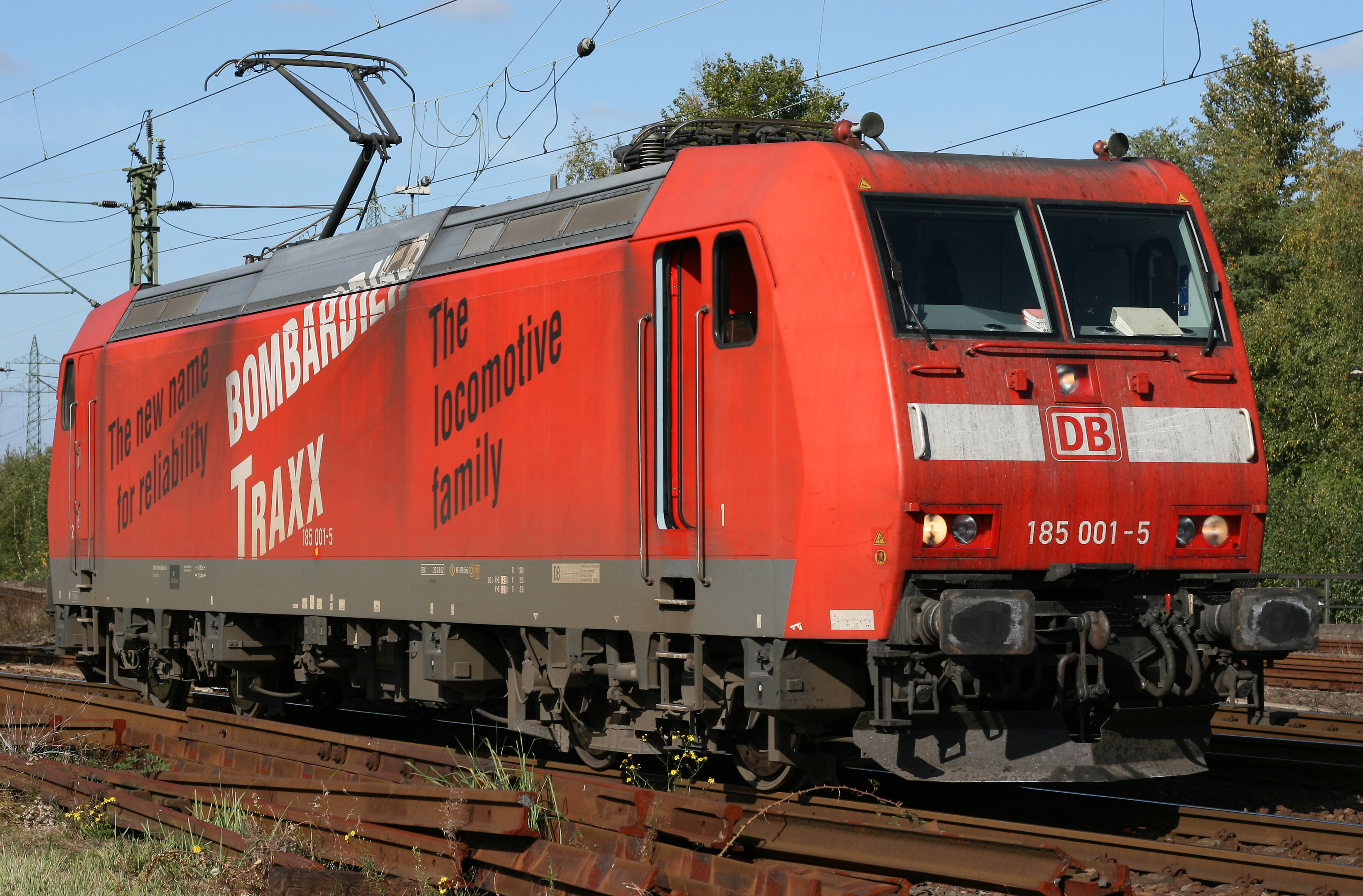DB locomotive classification
The series scheme of the German Federal Railroad corresponded to 1968 largely to the series scheme of the Deutsche Reichsbahn. For battery and combustion railcars, a new scheme was introduced in 1948, since for these vehicles was not yet existing practical system.
On January 1, 1968, introduced a new series scheme in the context of the transition of the UIC railways on computer-readable vehicle numbers.
- 2.1 Understanding
- 2.2 Examples
- 2.3 steam locomotives
- 2.4 Electric Locomotives
- 2.5 Diesel Locomotives
- 2.6 Kleinlokomotiven
To 1968
The steam locomotives, electric locomotives, EMUs and diesel locomotives, the existing series scheme of the Deutsche Reichsbahn was continued without change. For railcars with internal combustion engines and Akkumulatortriebwagen the problem revealed that no adequate system was available. Therefore, the RZA Munich developed for these vehicles an analog system, which was introduced in 1948.
Akkumulatortriebwagen
Introduced for the Akkumulatortriebwagen with effect from September 15, 1948 system had already been developed by the RZA Munich 1940.
It was like the other vehicles of the combination code letter tribe number order number.
Code letters:
- ETA - Railcars
- EBA - sidecar
- ESA - control car
Since it was DC vehicles in all vehicles, they were analogous to the rest of EMUs a leading " 1" at the three-digit root number. Because of the few railcar types only a few groups were formed according to their intended use.
ETA 140-159: Hasten railcars ETA 160-179: transport railcars ETA 180-189: In addition to rail railcar
In the order number vehicles received with the 2nd and 3rd class the number space from 001 to vehicles with 3rd class the number space from 101
Front and rear vehicle parts have been denoted with two-part vehicles, with "a" or "b".
Railcars with combustion engines
The system introduced in 1948 is analogous to the already applied systems for other vehicles. It consists of the combination of characteristic letter tribe number order number.
As the letters already unofficial combinations used VT for railcars, VS for cab control car, VM for intermediate cars and VB were used for sidecar.
For the root number following system was chosen:
- VT 01 - VT 19: railcars with bogies for 120 km / h and more
- VT 20 - VT 39: railcars with bogies for 100 km / h to 119 km / h
- VT 40 - VT 59: railcars with bogies for 85 km / h to 99 km / h
- VT 60 - VT 69: railcars with bogies 65km / h to 84 km / h
- VT 70 - VT 79: Railcars with steering axles for 65 km / h to 85 km / h
- VT 80 - VT 89: Railcars with steering axles for less than 65 km / h
- VT 90 - VT 99: Rail buses, light rail cars, narrow gauge rail cars, special railcars
The first digit of the serial number ( three or four digits ) stated that the type of power transmission.
- 0-4: electrical power transmission
- 5-8: hydraulic transmission
- 9: mechanical power transmission
1968
Basic
The scheme of computer-readable vehicle numbers based on a seven -digit number, with which all vehicles are referred to. It consists of a three-digit series number, a three-digit sequence number and an offset by a hyphen check digit.
The check digit is calculated from the first six digits. For this purpose, the sum of the digits of the number sequence is formed, which results when the six digits alternately with 1 and 2 multiplied ( first digit 1, second 2, third again with 1, etc.).
Does that doubling a point a two-digit number, so the result of the doubling of points for the subsequent cross- summation is first decomposed numbers as well. Example of the second digit " 6" x 6 → 2 → 12 → "1" " 2 " → 3
From all points of the cross sum is formed. The difference between these cross sum to the nearest multiple of ten is the check digit. When entering into the computer a plausibility check is performed on the check digit.
Series, of which more than 1,000 vehicles were available were grouped into consecutive series numbers.
The first digit of the three digit series number indicates the type of the vehicle. This replaces the convention of designation of the existing schema to organize by letters the types of vehicles.
The letters of the previous scheme were indeed transferred to the first digit of the three digit series number, but the letters were more often incorrectly used in correspondence and in publications. What is meant with E 110, so e is probably 10/110 meant, is spoken by a V 216, is presumably a V 160/216 meant.
Steam Locomotive Tender received no own vehicle number, but bearing the number of the towing vehicle to which they are coupled.
Control and sidecar get as far as possible in each case the ratios of the corresponding series railcars ( example: VT 11.5 is class 601 with 901 intermediate cars ). Variants of a vehicle get as far as possible the following series number (example: class 601 by installing a gas turbine for use with Series 602).
Examples
110494-2:
Number: 1 1 0 4 9 4 Multiplier: 1 2 1 2 1 2 Result: 1 2 0 8 9 8 Sum of the digits: 1 2 0 8 9 8 = 28 Difference to the nearest multiple of 10 ( 30-28 =) 2 2 = Check Digit 101108-9:
Number: 1 0 1 1 0 8 Multiplier: 1 2 1 2 1 2 Result: 1 0 1 2 0 16 Sum of the digits: 1 0 1 2 0 1 6 = 11 Difference to the nearest multiple of 10 ( 20-11 =) 9 9 = check digit steam locomotives
Steam locomotives was assigned as expiring genus zero. The previously practiced already by the intended use classification of steam locomotive series was continued. So within the DB scheme, it gave the following groups:
The re-drawing of the steam locomotive series was usually by prepending a zero. Examples: Steam locomotive class 23 was Series 023 Falls summarized previously in a series of different unit types and were separated by defined serial number ranges were in the new scheme each have their own class numbers assigned ( examples: Steam locomotive class 01 was series 001, series 01.10 was Series 011 ( coal- fired ) and 012 (oil- fired ) ). The Series 41 was divided into the numbers 041 ( coal -fired) and 042 (oil- fired ). The Series 44 was given the numbers 044 ( coal -fired) and 043 (oil- fired ). The 50 series was divided into the serial numbers 050 to 053, the thousands place were offset according to the serial numbers. In countries train types, the class numbers were transferred directly in such cases. In all series the thousands place accounted for in the sequence numbers. A series 038 was generally the first zero has not played a part in the use of language from a series 38.40. The series 011 and 012, however, represent exceptions
Electric locomotives
Electric locomotives were rated as the most important type of traction, so the one they were assigned. Electric locomotives were transferred to the rule by a 1 was preceded instead of the previous code letter "E". For example, unit electric locomotives of the series E 40 in 140, the Series E 10 in 110 and the E series have been 10:12 redrawn in 112.
Diesel locomotives
For diesel vehicles, in the old scheme, the series number was proportional to the projected engine performance, so that two - and three-digit class numbers templates. The two-digit numbers were again transferred directly (examples: Series V 60 was Series 260, Series V80 was Series 280), at the three -digit, the last digit of the series number was in the redrawing deleted (for example: Series V 160 was 216 series ). Again, variants were grouped into consecutive series numbers ( examples: class V 200.0 was 220 series, 221 series series V200.1 was, the V - 160 family, consisting of V 160, V 160 long, V 162, V 164, V 168 and V 169 was divided into the numbers 210, 215, 216, 217, 218 and 219. )
Kleinlokomotiven
The small locomotives were in the new numbering plan the code number " 3". The second digit identifies the service class ( according to the state of 1955). The third digit differs by speed, type of brake and drive system ( chain or shaft drive ). Small locomotives of the former genus Ka the new series designation received 381 ( prewar designs ) and 382 (newer types ). The existing narrow gauge small locomotives of the island railway Wangerooge were on the series 329. 1987, the diesel locomotives of the DB Class 260/261 were assigned to the small locomotives and were given the series designation 360 /361.
Changes from 1 January 1992 ( Joint series scheme DR and DB)
As part of the unification of the two German State Railways German Railways and German Reichsbahn, it was necessary to create a unified system.
Due to the number of re drawing vehicles and the better system of the DB system, it was decided to continue the naming scheme of the DB.
As part of the conversion process, there were some minor adjustments to the scheme.
Narrow gauge diesel locomotives and small have been reclassified in the series 299 and 399.
In -and medium cars, the serial numbers 001-599 and control cars maintain order numbers 601 to 999
Museum vehicles received is different from the traditional mode number series designation, but this was only used in the cab and in the computerized billing. This corresponded to the first digit of the series of traction, as the second and third digits were the vehicles the 88th museum steam locomotives were thus presented with the computer 088 series and museum - electric locomotives, the 188 In the order number has been trying to adapt them to the previous series.
Narrow gauge locomotives were given new running numbers that would allow no conclusion on the current operating point. The first digit of the serial number is used to distinguish the gauge.
Swell
- Wolfgang Valtin: German locomotive Archives: list of all locomotives and railcars Vol 1 transpress, Berlin 1992
- Model railroaders 11/91 12/91: renumbering DR → DB









